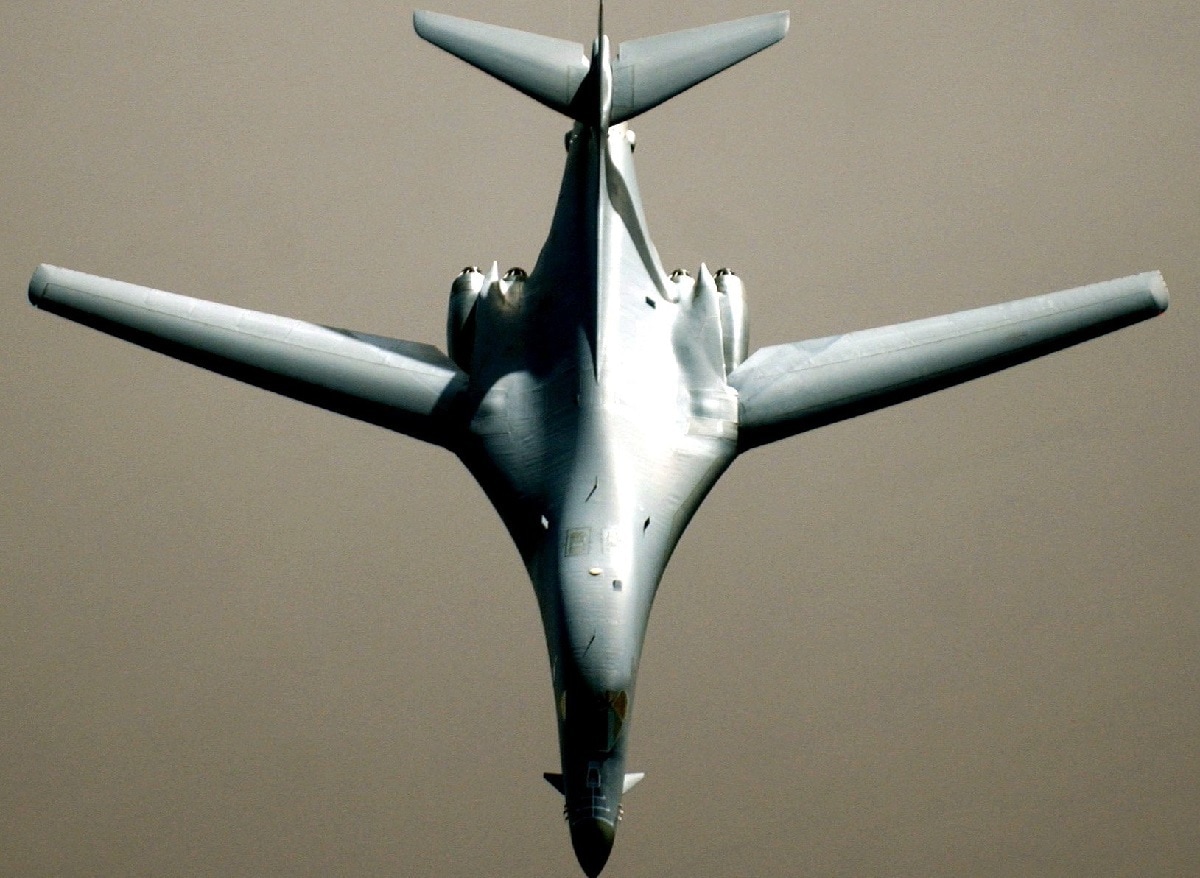The end is inching closer for the Cold War era B-1 Lancer bomber—but the current forty-five operational aircraft will remain in service at least until the new Northrop Grumman B-21 Raider stealth bomber are ready for duty. This month, the United States Air Force Strike Command (AFSC) announced that it has retired the last seventeen B-1B bombers from its inventory. The divestiture of the aircraft is in support of the Air Force’s efforts to modernize America’s bomber fleet, as authorized by the National Defense Authorization Act (NDDA).
The divestiture of those aging B1 bombers was concluded on Sept. 23, as the last aircraft flew to the boneyard at Davis-Monthan Air Force Base.
“The divesture plan was executed very smoothly,” said Brig. Gen. Kenyon Bell, AFGSC director of Logistics and Engineering. “With fewer aircraft in the B-1 fleet, maintainers will be able to give more time and attention to each aircraft remaining in the fleet.”
However, not all of the seventeen recently retired aircraft of the fleet of sixty-one bombers went to the boneyard for long-term storage. Of the recently retired B-1B aircraft, one aircraft went to Tinker Air Force Base in Oklahoma as a prototype for structural repair actions while another went to Edwards Air Force Base as a ground tester. Also, one aircrft went to Wichita, Kansas, at the National Institute for Aviation Research for digital mapping while another was sent to Barksdale Air Force Base in Louisiana, where it will become a static display for the Barksdale Global Power Museum.
The remaining thirteen aircraft will be stored at the boneyard at the 309th Aerospace Maintenance and Regeneration Group at Davis-Monthan Air Force Base in Type 4000 storage. Four of those will remain in a reclaimable condition that is consistent with Type 2000 recallable storage. The Air Force also reported that the retirement of the B-1B bombers did not affect the service’s lethality or any associated maintenance manpower. Instead, the retirement of the seventeen bombers allowed officials to focus maintenance and depot-level manpower on the remaining aircraft, increasing readiness and paving the way to for bomber fleet modernization to meet future challenges.
“Beginning to retire these legacy bombers allows us to pave the way for the B-21 Raider,” Bell explained. “Continuous operations over the last twenty years have taken a toll on our B-1B fleet, and the aircraft we retired would have taken between 10 and 30 million dollars per aircraft to get back to a status quo fleet in the short term until the B-21 comes online.”
Bell added that by retiring those seventeen aircraft now, AFGSC can instead focus on prioritizing the health of the current fleet, including modernization efforts, to make the bomber fleet more lethal and capable overall.
The Air Force is currently in the process of transitioning from three bombers to two – which includes a rebuilt B-52 and next-generation B-21. Together the two bomber fleet will deter both established and rising powers. The Air Force has said this change is vital to future Joint and Allied operations because no other service or partner nation provides the long-range bomber capability.
The Northrop Grumman B-21 Raider is expected to enter service by 2026–2027. It is to be an advanced, very long-range, large, heavy-payload stealth intercontinental strategic bomber for the Air Force and will able to deliver conventional and thermonuclear weapons.
Peter Suciu is a Michigan-based writer who has contributed to more than four dozen magazines, newspapers and websites. He regularly writes about military small arms, and is the author of several books on military headgear including A Gallery of Military Headdress, which is available on Amazon.com.

